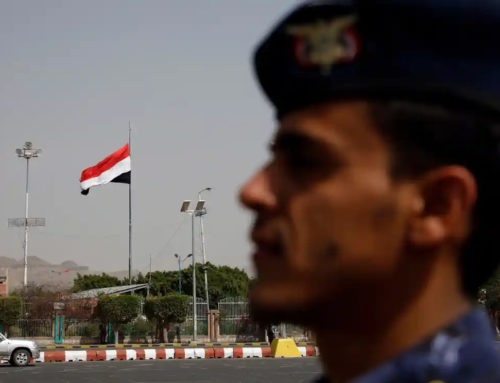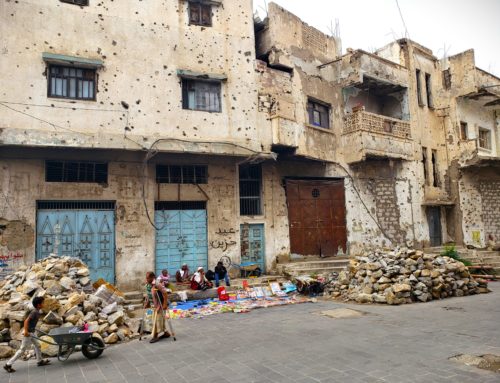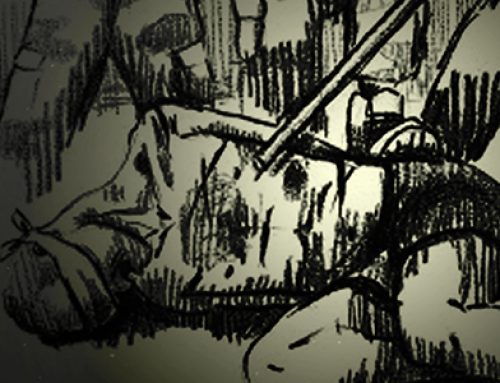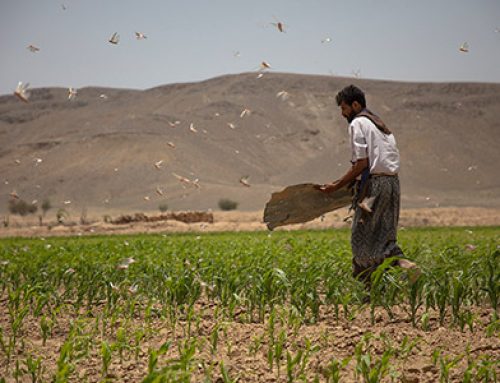Radhya Almutawakel

Wed – (26 Aug 2015)
Lots of money and other stuff disappeared from the house of Abdul Hakim. But the most heart-aching thing was the savings of his 10-year-old daughter, Afaf. Afaf’s piggy bank was broken and all her savings (4700 riyals = US$ 22) taken. She had been striving hard to collect and save that amount … since Eid-ul-Fitr, end of Ramadhan. Afaf cried painfully at the loss of her savings, and was only appeased when her father compensated her.
Yemeni man (especially with average income) loves his home very much, and regards it as a member of his family. This issue becomes crystal-clear for anyone who investigates the damage caused to civilians’ properties after every clash or war in this country.
As part of its field research about violations so as to document them in a report to be published later, Mwatana Organization for Human Rights visited a number of areas and neighborhoods that were subject to clashes between Ansar Allah (Houthis) and some government forces – the clashes which ended with the Houthis taking control of Sana’a on Sunday evening September 21, 2011. The forces of both the government and Al-Houthi Group appeared to have been working in rotations as far as targeting civilian homes is concerned, whether by breaking into them or looting them or bombing them indiscriminately. When we were checking on casualties, residents would pull our hands and ask us to come and see the damage caused to their homes, as if the scratches on walls and furniture and other small items appeared to them like bleeding bruises on an animate body that bleeds just like them.
Many residents tried to stay at home but had to leave at the last minute after everything around them was giving them signs that it was impossible to stay any longer. Some even refused to leave their homes and remained there until the last moment, despite the danger: some of them survived while others died at their home, vowing not to leave their homes except to their final resting place.
This is the extent of attachment Yemenis hold in their hearts for their houses … something that motivated me to take you on a journey through the details of the suffering of the walls, doors and various fittings and furniture. However, this is, in fact, only a small sample and the tip of the iceberg of the damage caused to citizens’ houses during the clashes which lasted for four days only.
Al-Nahdhah Neighborhood was one of many neighborhoods whose most residents fled because of the clashes. Those who fled managed to secure their lives but not their homes. The buildings existing opposite of any of the gates of Al-Iman University campus or the military post there (formerly known as “The Brigade Camp”) were stormed by government forces on Saturday, September 20 , after detaining two guards from a security company and subjecting them to interrogation for two hours inside Al-Iman University campus. The guards were then released after orally undertaking to leave the residential colony they had been assigned to guard. The residential colony was stormed and a lot of apartments were used as barracks and as places for fighters’ living and sleeping. When owners returned after a day or two, they found out that their homes were never the same as they had left behind when they fled.
Nafeesah Al-Weshali came back after she had bought a door lock to replace the one damaged by bullets. When we went up with her into her apartment, we found it just like any other apartments: everything upside down, with marks of bullets drawing the contours of their walls and windows. Nafeesah said that she had taken her gold jewelry with her when she left, and the intruders took only some accessories thinking that those were gold. A strange thing about Nafeesah’s apartment was the fact that although she had kept all interior doors open before departure, when she came back she found that the doors had been locked and then smashed open by bullets. It seemed as though the use of bullets to open doors was inevitable sacred tradition practiced even against open doors!
Ilham Al-Tayifi said that she found a hole on the wall that separated their apartment and the apartment next door. Perhaps, the intruders entered the apartment next door, found no furniture there, and decided to open a hole on the wall, having made sure that the apartment was furnished. After opening its door with bullets, they entered and wreaked havoc.
Abdul-Hakim Al-Shehari realized that his apartment had been broken into only accidentally. For several times, he tried to enter it and was unable to do so, whether because of government forces during the clashes or by Al-Houthi militants after the clashes. Lots of money and other stuff disappeared from the house of Abdul Hakim. But the most heart-aching thing was the savings of his 10-year-old daughter, Afaf. Afaf’s piggy bank was broken and all her savings (4700 riyals = US$ 22) taken. She had been striving hard to collect and save that amount … since Eid-ul-Fitr, end of Ramadhan. Afaf cried painfully at the loss of her savings, and was only appeased when her father compensated her.
The particular aspect of the apartments of Ilham Al-Tayifi and Abdul-Hakim is that in these two apartments the soldiers took off their uniforms (suits, boots and berets) and took clothes that belonged to the owners of the apartments. The soldiers dumped their uniforms on the ground and left.
On the other hand, Wahdah Omar Ahmad wanted me to take separate photos for each and every cut in the curtains and bullet mark on the windows. She showed me around in her home, whose door was also opened be bullets. She said, “I took so much debt to build this house for my daughters, who are orphans and have nobody except me to look after them”.
There is another side of Al-Nahdhah Neighborhood in which a number of houses were stormed by Al-Houthi militants. But such incidents left behind dead and wounded people, and will be included in the report which will be released later about civilian casualties in the clashes. Therefore, I will take you on to Al-Andalus Neighborhood, near Mathbah Traffic Circle, specifically to the house of Saleh al-Sharabi, a two-storey building in which the second floor is rented by Yemeni Development Network for NGOs (YDN, Namaa).
Saleh was walking around in his apartment in a daze, looking pensively at the walls, doors and all other details and repeating in a low voice, “I have engraved every inch of this house the best way I could. I spent on it all the money I could save during my life. It is the fruit of a long period of working abroad.” Saleh and his family left their apartment only in the final moments … so reluctantly. He did not want to leave but he realized at a moment of heightened clashes that he might be exposing his life and his family to danger, so he want out physically, for his heart kept hanging there. It was Al-Houthi militants who stormed into Saleh’s apartment in his absence, and stayed therein. The problem is that they did not open the interior doors with bullet: they detonated the doors. Everything inside was destroyed (doors, arches, mosaic windows, and internal partitions). When Saleh returned he asked them to vacate. They did. But what they left behind was more or less the ruins of a house whose owner had spent decades of his life “engraving every inch of it the best way he could”.
Intrusions by both sides of the conflict were not the only damage caused to houses. There was also the damage caused by shells and bombs the warring parties were exchanging. In Al-A’anaab Neighborhood, a shell hit the house of Aref Ali Mohammed and burned part of the rooms and furniture. Another shell entered the home of Ahmed Al-Kharsani and did not only take part from his home, but also took the lives of his mother and nephew.
Clashes in Sana’a did not last long … almost 4 days only, and reaches a peak on Saturday, September 20th, 2014. However, the review process of the damage rolls over like a snow ball: the moment you enter a neighborhood to investigate one particular case, you discover that there are dozens of cases affected by various types of damage.
With regard to the houses, the damage that occurred should be checked by a special committee which the state should form to assess the damage and ensure fair compensation to the owners. Some people died trying to protect their homes, refusing to abandon their homes even in the darkest hour: it won’t be fair if the new state kills them twice.





